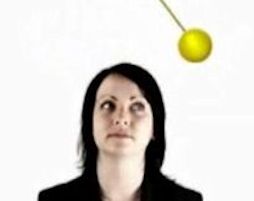
|
; |
The History Of Modern Hypnosis
Click here to email this
page to a friend. |
||
 Modern hypnotherapy began with Franz Antoin Mesmer, 1734-1815. Mesmer invented a system called Animal Magnetism or Mesmerism. A system of healing based on a belief that a disturbance of equilibrium of an invisible universal fluid which is spread throughout the body causes disease in humans. His magnetic re-adjustment of this fluid served to cure diseases. Mesmer would pass various magnetized items over the body and face which he believed magnetized these invisible fluids back into position and cured the disease. Hence, Animal Magnetism. Although Mesmer produced the hypnotic state in'numerable times he was quite unaware of the fact. Mesmer's method was to sit facing his subject. He would take the subject's hands into his own and stare deeply into the subject's eyes. Within fifteen minutes he would release his grip and begin to make stroking passes over the patient, keeping his fingers a few inches from the subject's body. He started at the top of the head, stopping at the eyes momentarily where pressure was placed then stopping at the chest, stomach and finally the knees. About fifteen passes were made. If a desirable effect was evidenced, Mesmer would continue with the s'ance. If not, the patient was asked to return for another session. When Mesmer's practice grew to unmanageable proportions, he evolved a theory. Magnetism could be stored in certain objects which would then emanate therapeutic vibrations. He used flowers, trees and tubs of water. As Mesmer's popularity grew, the mission of extending relief to the unfortunate gave way to entertaining the rich. Mesmer built a showplace in which to treat his patients. "In one room, under the influence of rods issuing from tubs filled with large bottles - the said rods ap'plied upon different parts of the subjects' bodies - the most extraordinary scenes took place daily. Sardonic laughter, piteous moans and torrents of tears burst forth on all sides. The subjects were thrown back in spasmodic jerks, the respirations sounded like death rattles, and terrifying symptoms were exhibited. Sud'denly, the actors of these strange performances fran'tically or rapturously rushed towards each other, either rejoicing and embracing, or thrusting away their neighbors with every appearance of horror."
"Another
room was padded, and presented a different spectacle. There,
women beat their heads against the padded walls or rolled on
the cushion covered floor in fits of suffocation. In the
midst of the panting, quivering throng, Mesmer dressed in a
lilac coat, moved about halting in front of the most
violently excited and gazing steadily into their eyes, while
he held both their hands in his, bringing the middle fingers
into immediate contact to establish the communication. At
another moment he would, by a motion of open hands and
extended fingers, operate with great current, crossing and
uncrossing his arms with wonderful rapidity to make the
final passes."**
" The
Marquis de Puysegur was a student of Mesmer's. While the
Marquis lived on his estate in wealthy retirement, he kept
himself entertained by magnetizing peasants just as his
former Master had done. During his experiments, the Marquis discovered new phenomenon, unknown to his mentor. The Marquis was working with a young peasant named Victor. Victor had a lung con'dition which caused him extreme amounts of pain. Under magnetization, Victor fell into a state of relaxation which was marked by the absence of his extreme pain. While
in the hypnotic state Victor spoke. The Marquis realized the
importance of this new phenomenon and began to experiment
with it. He converted his patient's thoughts to peace and
tranquility and suggested the absence of pain. Victor's pain
diminished. The Marquis named this state of mind, Artificial
Somnambulism; a state of mind similar to sleep produced
artificially in an entirely awake person. During this state
the thoughts and reactions of the patient are subject to the
direct suggestion of the operator. Dr. James Braid was a well-known surgeon in Manchester. He is known as the Father of the Scientific Evaluation of Hypnotism. In 1841, Braid observed a public demonstration of magnetism and decided it was all an act. He was very curious and so he watched a second demonstration. This time the magnetizer convinced him beyond a doubt that the subject was under control.; Braid
was a skeptic and a scientist. He dis'counted the magic
fluid theories and decided that there was a physical cause.
His theory was that a continued tiring of the sense of sight
could paralyze optic nerve centers, causing a con'dition
similar to sleep. Braid experimented with people, having
them fix their gaze upon the neck of a vase. His subjects
fell into a deep state of relaxation. Braid called this
state of mind, "Hypnosis" and the method used to
cause this state of mind, "Hypnotism". He coined
these words from the Greek word "Hypnos" which
means sleep. Several years later, Braid de'cided that
hypnosis was not sleep and tried to change the name to
"Monoideaism". However, the term
"Hypnosis" has stuck to this day. Professor
Azam, in France, duplicated Braid's experiments stressing
the claim it was possible to produce anesthesia under which
surgery could be performed with a minimum of pain and shock. Over
the following years there were several theories as to what
hypnosis was actually all about. Eventually, it was found
that hypnosis was based on indirect suggestion.
Myers
introduced the Theory of The Subliminal Self, suggesting a
sort of dual personality dwelling beneath the threshold of
consciousness. This hypothesis eventually became known as
the Theory of The Subconscious Mind
A list of the common uses of hypnosis. **FOOTNOTE: Deleuze F., Histoire Critique du Magnetisme Animal, Hippolite Bailliere, Paris, 1819, Volume II. Page 34. © 1982 By Alan B. Densky.; This document may NOT be re-printed without permission. All Rights Reserved. We are happy to syndicate our articles to approved websites.
|
|||
